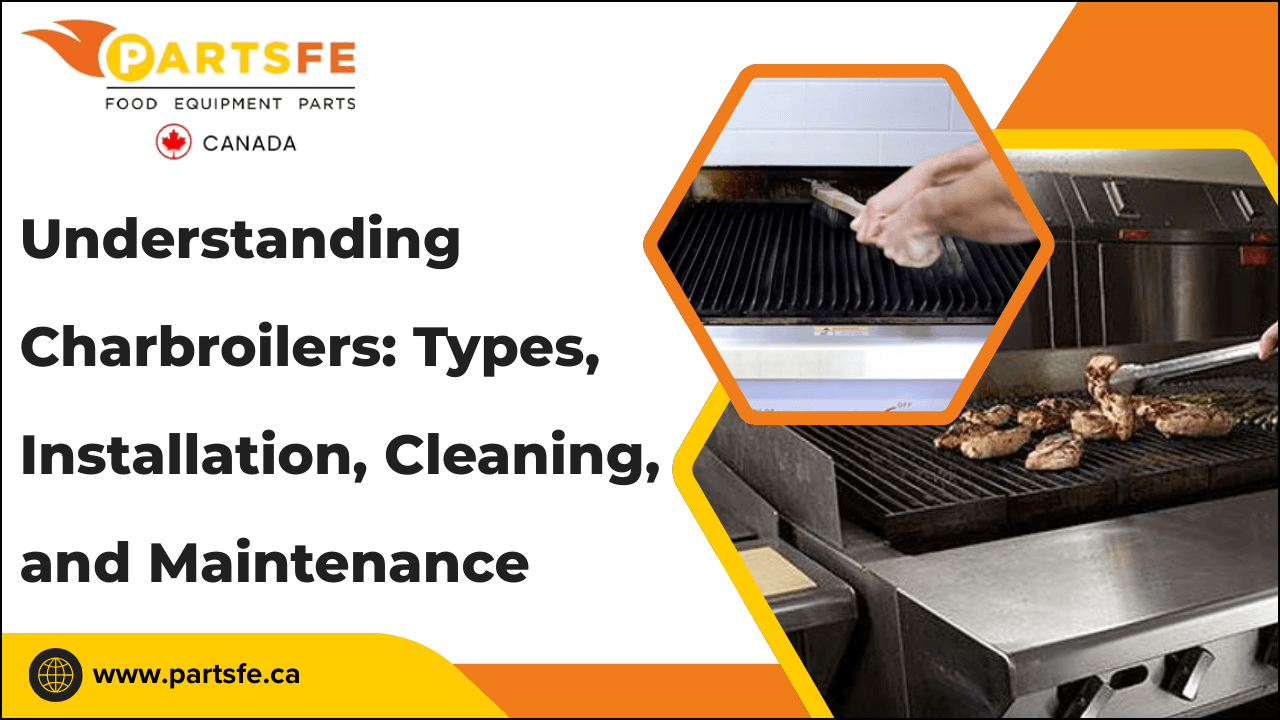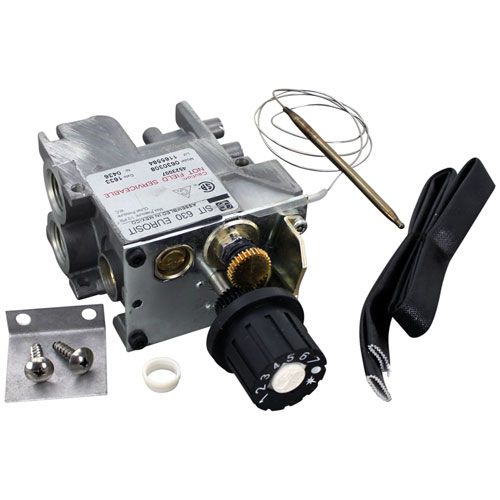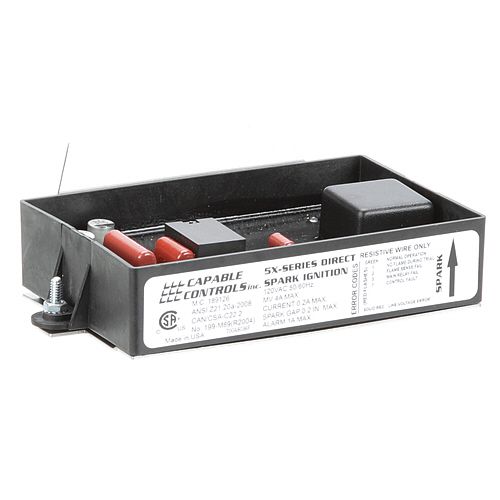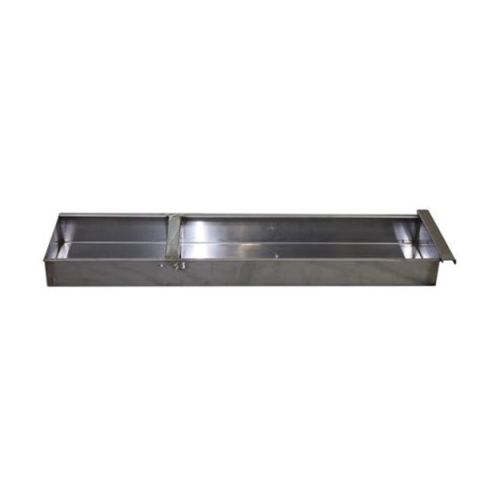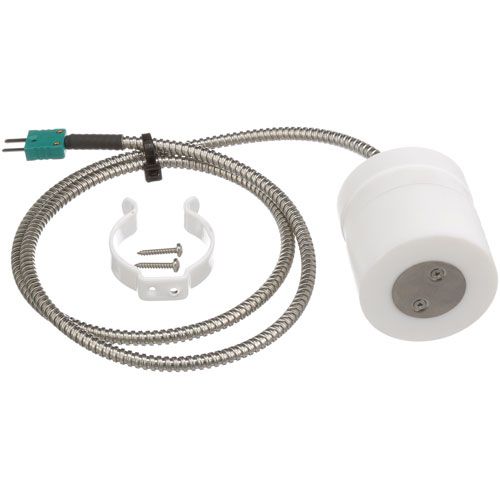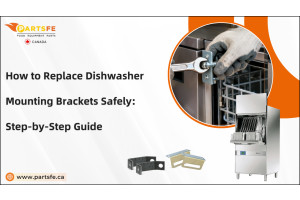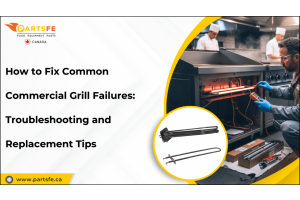Understanding Charbroilers: Types, Installation, Cleaning, and Maintenance
A commercial charbroiler is a widely used cooking appliance in commercial kitchens, perfect for grilling food items like steaks, burgers, and vegetables. It employs radiant heat to cook food, imparting a distinctive charred flavor and grill marks. This equipment is indispensable for many restaurants and food service establishments because it can efficiently cook large quantities of food consistently and quickly. Nevertheless, like any kitchen equipment, proper installation, cleaning, and troubleshooting are crucial to ensure optimal performance and durability. Let's delve into what charbroilers are, the different types available for commercial use, the installation requirements for commercial kitchens, the best practices for cleaning, and common issues that may occur.
What is a charbroiler?
A charbroiler is a cooking device typically used in commercial kitchens to grill food over an open flame or through radiant heat. This method imparts a unique charred flavor and attractive grill marks to the food, enhancing its overall taste and visual appeal. Charbroilers are commonly employed to cook items such as steaks, vegetables, and various other types of meat. By utilizing a charbroiler, chefs can quickly sear the outside of the food, locking in juices and forming a flavorful, caramelized surface.
Types of charbroilers
|
Charbroiler type |
Description |
Suitable for |
|
Countertop Charbroilers |
Compact units placed on countertops, are ideal for smaller kitchens with limited space or batch cooking. |
Smaller kitchens, limited space |
|
Freestanding charbroilers |
Larger, stand-alone units are suitable for medium to large kitchens or outdoor areas, often mobile with wheels. |
Medium to large kitchens, outdoor cooking |
|
Outdoor charbroilers |
Specifically designed for outdoor spaces like patios or decks, they are available in portable or permanent models. |
Outdoor settings, patio or deck |
|
Power source |
Description |
Advantages |
|
Gas charbroilers |
Use natural gas or propane for efficient heat distribution, easy to use and maintain in commercial settings. |
Efficient heat, easy maintenance, widely available fuel |
|
Electric charbroilers |
Powered by electricity, offering consistent heat distribution and easier cleaning with less smoke production. |
No need for gas supply, consistent heat |
|
Heat distribution method |
Description |
Suitable for |
|
Radiant Charbroilers |
Use ceramic or metal plates for even heat distribution, ideal for delicate foods like fish and vegetables. |
Delicate foods, even heat distribution |
|
Lava Rock Charbroilers |
Distribute heat through lava rocks that absorb and radiate heat, best for cooking denser items like meat and poultry. |
Denser foods, heat retention |
What are the components of a charbroiler?
-
Grates: Charbroiler grates are typically made of cast iron, stainless steel, or chrome-plated steel with ridges that create grill marks and allow fat to drain away.
-
Radiants: Positioned beneath the grates, radiants evenly distribute heat across the cooking surface, vaporize drippings, and reduce flare-ups.
-
Burners: Gas grill burners generate heat using gas (natural gas or propane) or electric elements, transferring heat to the radiants and ultimately to the grates.
-
Controls: Knobs or controls adjust burner intensity, providing precise temperature regulation for different cooking needs.
-
Grease tray: Located beneath the cooking surface, this tray collects drippings for easy cleanup and to prevent flare-ups.
-
Ignition system: Ensures safe burner ignition using a spark igniter or electronic system in gas-powered models.
Factors to consider when purchasing a charbroiler
Factors to consider when purchasing a charbroiler for commercial use include several key aspects that impact kitchen efficiency and productivity.
-
Size and capacity: Determine the appropriate size and cooking capacity of the charbroiler based on the volume of food you intend to cook and the available space in your kitchen.
-
Fuel type: Choose between gas and electric charbroilers based on your kitchen's infrastructure, energy costs, and cooking preferences. Gas charbroilers are known for their quick heating and even cooking, while electric charbroilers offer precise temperature control and easy installation.
-
Cleaning and maintenance: Assess the ease of cleaning and maintenance requirements to ensure efficient upkeep and optimal performance of the charbroiler.
-
Control features: Look for adjustable control knobs or digital temperature controls, depending on the desired precision in heat regulation and cooking control.
-
Cooking surface material: Consider the material of the cooking surface, such as cast iron, stainless steel, or chrome-plated steel, as it directly impacts heat retention, durability, and ease of cleaning.
How to install commercial restaurant charbroilers?
Installing a commercial restaurant charbroiler requires careful planning and execution to ensure proper functionality and safety. Choose an appropriate spot in the kitchen considering ventilation, proximity to other equipment, and utility access (gas and electricity).
-
Measure the Space Ensure the allocated space fits the charbroiler's dimensions, following the manufacturer's clearance requirements and local codes.
-
Utility check: Confirm gas and electrical connections are available and suitable for the charbroiler's needs.
-
Install ventilation: Set up a commercial hood system to capture and remove smoke and grease, ensuring compliance with local codes.
-
Prepare the area: Clean and clear the installation site, making necessary modifications to the countertop for proper placement.
-
Test and inspect: Before use, inspect all connections, knobs, and valves. Turn on the charbroiler to test the heating and burner functionality.
-
Staff training: Train your team on operating and maintaining the charbroiler safely and efficiently.
Charbroiler installation cost
In commercial kitchens, the cost of installing a charbroiler can vary based on several factors such as the unit’s size, type (gas or electric), kitchen layout, and any additional requirements like ventilation hoods or gas line connections. Typically, the installation cost for a commercial-grade charbroiler ranges from $500 to $1,500.
This price usually includes professional labor to properly install the unit, connect it to utility sources, and ensure safe and effective ventilation according to commercial kitchen safety standards. Larger charbroilers or those with advanced features may require more complex installations, potentially raising the overall cost.
In a busy commercial kitchen environment, proper ventilation is crucial to meet fire and health codes, which might involve additional expenses for exhaust hoods or fire suppression systems. If the kitchen already has compatible utilities and ventilation, the installation may be more straightforward and cost-effective.
To ensure compliance with local regulations and minimize downtime, it's best to hire experienced commercial kitchen contractors who can assess the specific requirements and provide an accurate estimate tailored to your operation.
Best commercial charbroilers brands: When it comes to commercial
Several prominent brands are known for producing high-quality commercial charbroilers. Garland, Imperial, Southbend, and Vulcan are some of the top brands known for their performance, durability, and innovation.
-
Garland charbroilers regularly provide wonderful results.
-
Southbend provides a wide range of charbroilers that provide chefs exact control over excellent searing on a variety of dishes.
-
Imperial charbroilers are noted for their solid construction and good heat distribution, which results in even cooking and appealing grill marks.
-
Vulcan charbroilers are built for heavy-duty use, with innovative features to increase efficiency and flavor. Each brand has distinct capabilities that enable it to meet a wide range of culinary needs in commercial settings.
How to troubleshoot issues with a commercial charbroiler?
When troubleshooting a commercial charbroiler in a professional kitchen, addressing common issues efficiently is key. Follow these steps:
|
Step |
Description |
Action to Take |
|
Power Supply Check |
Ensure the charbroiler is plugged in |
- Plug in charbroiler if not already. - Inspect and reset circuit breaker or replace blown fuse. |
|
Gas supply inspection |
Confirm gas supply is on with valves fully open for gas-fueled charbroilers. |
- Check gas supply valves and ensure they are fully open. |
|
Ignition verification |
Examine igniter, clean or replace if not sparking or if pilot light won't light. Follow manufacturer's instructions. |
- Clean or replace igniter components as needed. |
|
Heat distribution check |
Inspect burners for clogs or damage if heat distribution is uneven. Clean or replace burners as necessary. |
- Thoroughly clean burners to remove debris or grease. |
|
Addressing smoke or flames |
Clean grates and burners regularly. Adjust airflow or use grease traps. |
- Regularly clean grates and burners to prevent grease accumulation. |
|
Temperature calibration |
Review thermostat settings and control knobs for accurate calibration. Replace faulty controls if needed. |
- Check thermostat settings and calibrate as necessary. |
|
Regular maintenance routine |
Follow manufacturer guidelines for routine cleaning and maintenance of appliance lifespan. |
- Adhere to the recommended cleaning schedule. |
How to clean and maintain commercial restaurant charbroilers?
Cleaning and maintaining a commercial restaurant charbroiler is essential for ensuring food safety, the longevity of the equipment, and optimal performance.
Cleaning a commercial restaurant charbroiler:
-
Allow cooling: Before cleaning, make sure the charbroiler has cooled down.
-
Remove particles: Use a wire brush or scraper to remove any excess food particles and grease from the cooking surface.
-
Apply solution: To loosen oil and filth, thoroughly coat the cooking surface with the cleaning solution and allow it to sit for the suggested length.
-
Scrubbing: To remove any leftover residue, scrape the surface with a grill brush or scrub pad.
-
Rinse: Thoroughly rinse the cooking surface with clean water to eliminate any remaining cleaning solution.
-
Dry: Use clean, lint-free towels or let the charbroiler air dry entirely.
Maintaining a commercial restaurant charbroiler:
Routinely inspect the charbroiler for signs of wear, rust, or loose components.
Cleaning the charbroiler after each usage helps to avoid grease and dirt buildup.
Burner maintenance involves inspecting and cleaning burner elements regularly to ensure that they perform correctly and are not obstructed.
-
Ventilation system: Keep the ventilation system free of impediments to ensure airflow and avoid overheating.
-
Lubrication: Use food-grade lubrication on moving elements such as hinges and knobs to avoid rust and ensure smooth functioning.
-
Gas connections: Check gas connections for leaks regularly and solve any problems as soon as they arise.
-
Part replacement: Replace worn-out or damaged parts as soon as possible to keep your charbroiler running smoothly and safely.
Charbroilers are essential equipment in commercial kitchens, providing the distinctive flavors and grill marks that enhance the appeal of various dishes. By understanding the types of charbroilers available, the installation process, and the importance of proper cleaning and maintenance, restaurant owners and chefs can optimize their charbroiler usage for efficient and flavorful cooking. With a focus on selecting the right type, ensuring correct installation, and maintaining cleanliness, establishments can continue to deliver high-quality and delicious dishes while prolonging the lifespan of their charbroilers. At PartsFe, we offer a comprehensive selection of charbroiler parts and accessories from reputable manufacturers. Our inventory includes a variety of top-quality components, such as burners, grates, valves, and igniters.
FAQs
How does a charbroiler enhance the flavor of food compared to other cooking methods?
Charbroilers use open flames or radiant heat to impart a distinct charred flavor and attractive grill marks on food, enhancing its taste and visual appeal.
Are charbroilers energy-efficient compared to other cooking equipment?
Charbroilers are known for their energy efficiency, especially models with improved heat distribution and control features that help reduce energy consumption during cooking.
What fuels can be used in a commercial charbroiler?
Commercial charbroilers can run on natural gas, propane, electricity, or charcoal.

